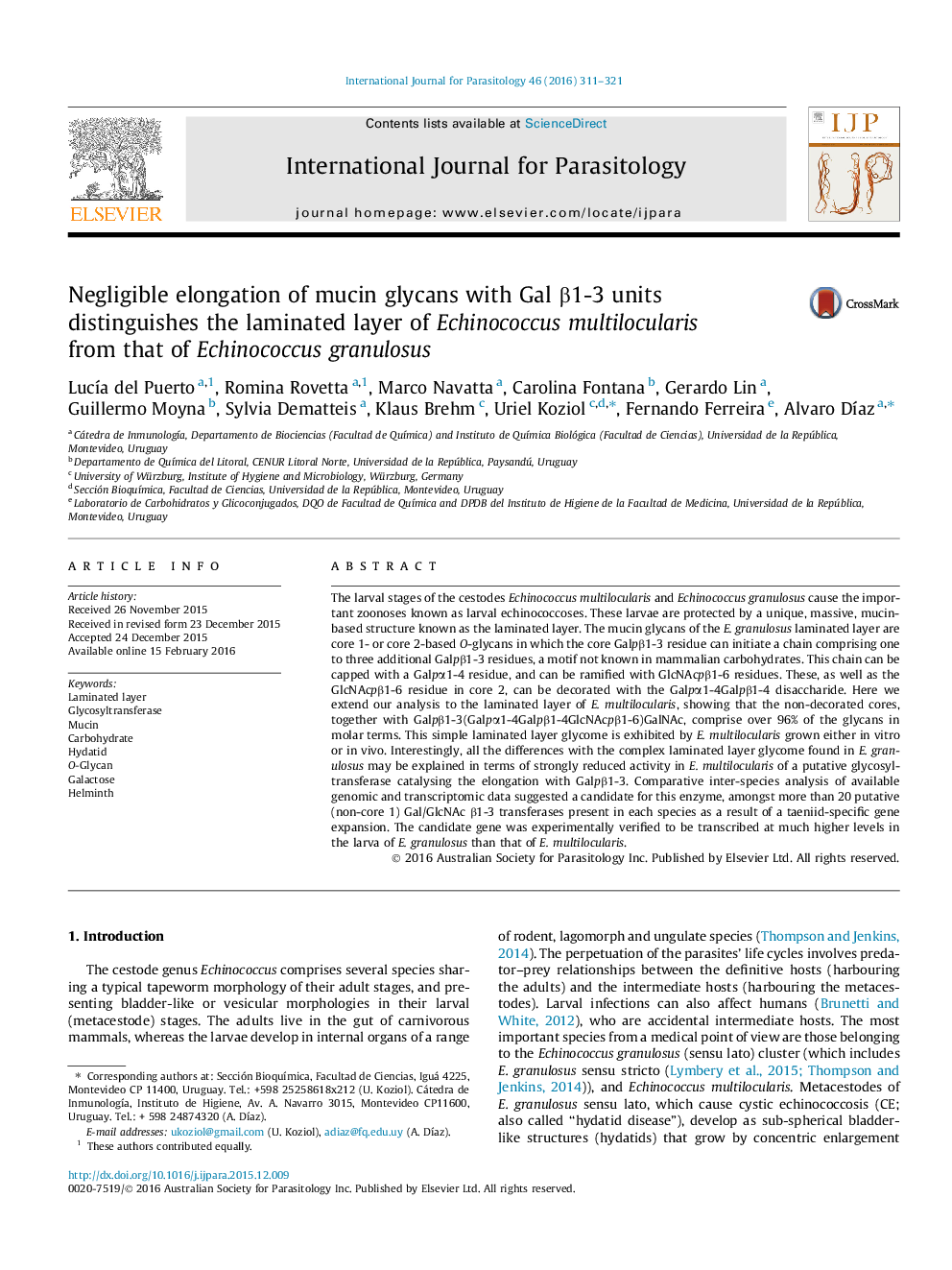| Article ID | Journal | Published Year | Pages | File Type |
|---|---|---|---|---|
| 2435971 | International Journal for Parasitology | 2016 | 11 Pages |
•Echinococcus larvae are protected by the laminated layer, rich in mucin glycans.•We describe the mucin glycans of the E. multilocularis laminated layer.•These glycans prove to be smaller and simpler than in E. granulosus.•The absence of galactose β1-3 chains explains all the differences from E. granulosus.•We propose a candidate gene for the taeniid-specific enzyme that synthesizes these chains.
The larval stages of the cestodes Echinococcus multilocularis and Echinococcus granulosus cause the important zoonoses known as larval echinococcoses. These larvae are protected by a unique, massive, mucin-based structure known as the laminated layer. The mucin glycans of the E. granulosus laminated layer are core 1- or core 2-based O-glycans in which the core Galpβ1-3 residue can initiate a chain comprising one to three additional Galpβ1-3 residues, a motif not known in mammalian carbohydrates. This chain can be capped with a Galpα1-4 residue, and can be ramified with GlcNAcpβ1-6 residues. These, as well as the GlcNAcpβ1-6 residue in core 2, can be decorated with the Galpα1-4Galpβ1-4 disaccharide. Here we extend our analysis to the laminated layer of E. multilocularis, showing that the non-decorated cores, together with Galpβ1-3(Galpα1-4Galpβ1-4GlcNAcpβ1-6)GalNAc, comprise over 96% of the glycans in molar terms. This simple laminated layer glycome is exhibited by E. multilocularis grown either in vitro or in vivo. Interestingly, all the differences with the complex laminated layer glycome found in E. granulosus may be explained in terms of strongly reduced activity in E. multilocularis of a putative glycosyltransferase catalysing the elongation with Galpβ1-3. Comparative inter-species analysis of available genomic and transcriptomic data suggested a candidate for this enzyme, amongst more than 20 putative (non-core 1) Gal/GlcNAc β1-3 transferases present in each species as a result of a taeniid-specific gene expansion. The candidate gene was experimentally verified to be transcribed at much higher levels in the larva of E. granulosus than that of E. multilocularis.
Graphical abstractFigure optionsDownload full-size imageDownload high-quality image (100 K)Download as PowerPoint slide
